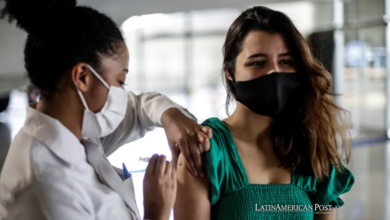Classes on television, an option for Latin America in quarantine
Distance classes on television have a recent implementation due to the pandemic. What challenges does this new modality imply? .

The cancellation of face-to-face classes has resulted in the implementation of television classes during the pandemic. / Photo: Unsplash
LatinAmerican Post | Ariel Cipolla
Listen to this article
Leer en español: Las clases por televisión, una opción para Latinoamérica en cuarentena
The cancellation of face-to-face classes in many countries generated different proposals in the educational field. One of the most recent occurred with the possibility of students being educated through television, something that was applied in Mexico since August 24, according to the Xataka website.
The head of the country's Ministry of Public Education, Esteban Moctezuma, presented the lecture on returning to classes through total distance, using different platforms. Among them, the possibility of tuning into three educational channels for basic education, while the higher education only has two.
However, the CNN website highlighted that, according to experts, Mexico will begin teaching on television "without a clear strategy." In other words, it seems that the decision to start it in this way responds more to the urgency for students to educate themselves, although without seeing how it could happen. Let's see, then, some more details about it.
Education through television in the pandemic
First of all, everyone seems to agree that this is a "trial and error" stage. This is what highlights the website of El Ceo, which characterizes television education as the "great experiment of Mexico." In other words, the pandemic evidenced the gaps in access to digital information, so this seems to be a haphazard solution.
In other words, it is assumed that the possibility for students to watch television and educate themselves will be greater than that of the Internet. According to different surveys of the government's Digital Terrestrial Transition (DTT), 92.5% of households in Mexico have a television set, although there are 2.7 million households that do not have such devices.
However, the content program seems to point towards quality. The Infobae website highlights that the proposal will include "outstanding teachers for their professional careers and experts in various topics", so that a good dialogue with students can be generated through three different types of programs.
At the moment, it is known that the programs do not involve homework, although it is true that teachers must accompany their students to assign activities. While a good evolution is expected, the teachers will have to prepare a content script, select the readings and share additional resources.
In other words, TV appears as a complementary resource to the teachers' teachings . In this same line of thought is the New York Times, which highlights that television education "is experiencing a boom due to the coronavirus pandemic", since, in regions where Internet access is limited, they are resorting to less current technology to reach more students.
Also read: Could COVID-19 in wastewater be infectious?
The El País website also refers to the "challenge of educating in Latin America during the pandemic", since teachers and students themselves face difficulties due to the resources of precarious educational systems. This is also the case in Peru, where some regions with rural schools are unable to connect to the Internet.
In this same country, a television program for students with disabilities was recently announced, an initiative that, according to the Andina Peru website, is promoted by the Ministry of Education thanks to the “I learn at home” program. In other words, an attempt is made to cover as many students as possible through means that are assumed to be in most homes.
A similar situation occurred in Argentina, since, as the Cadena3 medium mentions, an educational content platform was launched through Public TV, in such a way that the teaching of classes can be maintained during the quarantine. That is, pedagogical programs are incorporated so that even rural schools can have access to the content.
Despite the fact that this initiative to educate through television seems not to be perfect, it is clear that it is an alternative that we must take into account. When we think of virtual education, we automatically associate it with the Internet and computers. However, this very particular moment of the system showed the shortcomings of many families throughout the continent.
Therefore, the fact that they try to massify the content from the screens, without the need for an Internet connection, implies covering a greater number of students who have the right to study. It remains to be seen what measures each country takes to reduce this material gap that worries the educational sectors so much.




